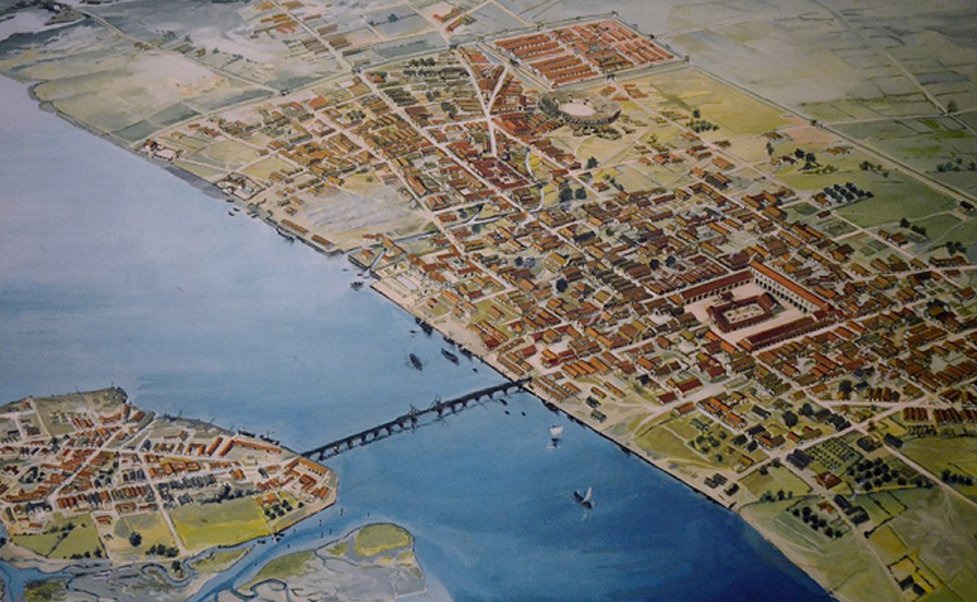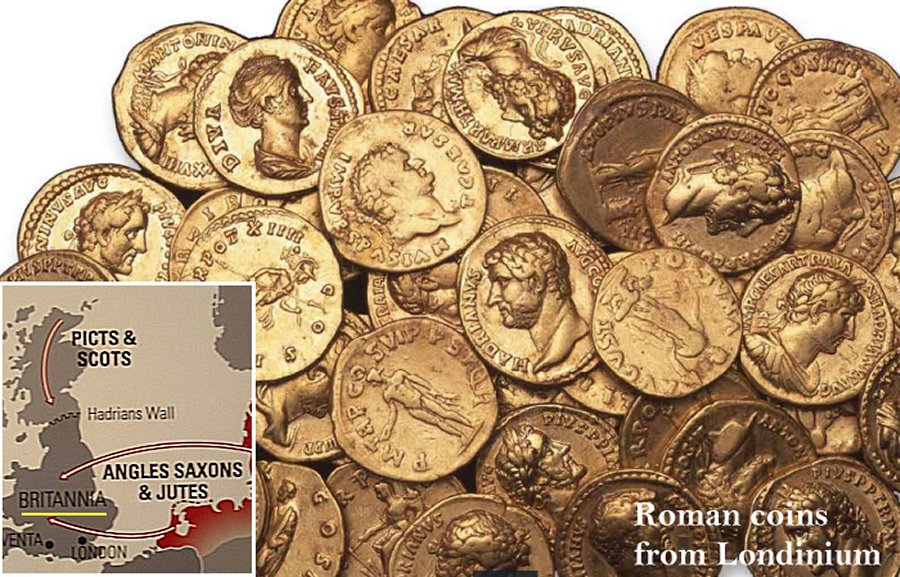Londinium: Ancient Roman Outpost That Became Powerful City Of London
A. Sutherland - AncientPages.com - The Romans established Londinium on the current site of the City of London around 43 AD.
Reconstruction drawing of Londinium c. 120 AD. Image credit: Carole Raddato - CC BY-SA 2.0
The first definite mention of the city refers to the year 60 in the writings of Tacitus, the Roman historian, and senator, who wrote of a celebrated center of commerce filled with traders.
Londinium was equipped with massive defenses: several forts were built along with the immense London Wall, remains of which are still recognizable in the city.
By the reign of Hadrian, Britannia was a fully developed province of the Roman Empire. One of the Roman outposts was Londinium, which eventually became one of the world's most famous modern cities - London.
Initially, Londinium was just a small military outpost occupying a relatively small area of 1.4 km2 (0.5 sq mi), but the city grew rapidly. By the turn of the century, Londinium had grown to about 60,000 people,
Its access to the River Thames and the North Sea also contributed to the city's importance and turned it into a thriving and influential provincial capital and major port.
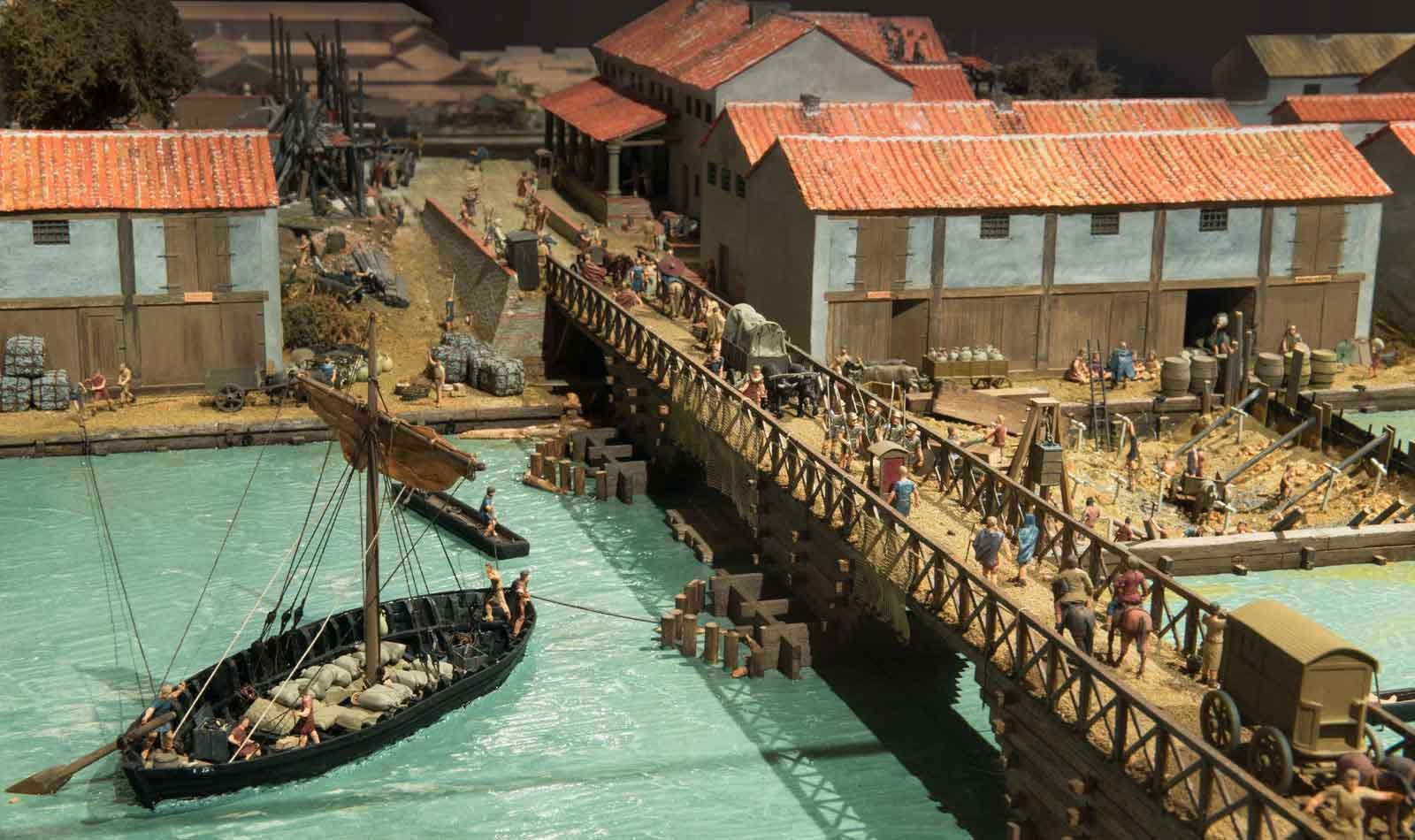 Londinium Bridge. This model shows how the Romans built the first bridge across the River Thames, where London Bridge now stands. Credits: Museum of London
Londinium Bridge. This model shows how the Romans built the first bridge across the River Thames, where London Bridge now stands. Credits: Museum of London
Londinium was not only the center of commerce but also the seat of government. By the 2nd century AD., Londinium was a large Roman city with tens of thousands of inhabitants. Richer and noble people's homes had wall paintings and mosaic floors; many lived in villas and palaces.
They had to their disposal temples, large forums, and baths. Ordinary people lived in tiny houses with front doors and workshops behind. Soldiers lived in the fort, outside the central part of the town.
The city was equipped with massive defenses: several forts were built along with the immense London Wall, remains of which are still recognizable in the city. The Romans also built heavy fortifications for the town, constructing several forts and the massive London Wall, approximately 14.5 feet thick and at least 20 feet high.
Parts of this construction are still visible across the city today. Londinium's well-built roads linked it with several other, smaller towns and continued to the borders of Britannia. The countryside's landscape, dotted with well-developed farms, surrounded Londinium.
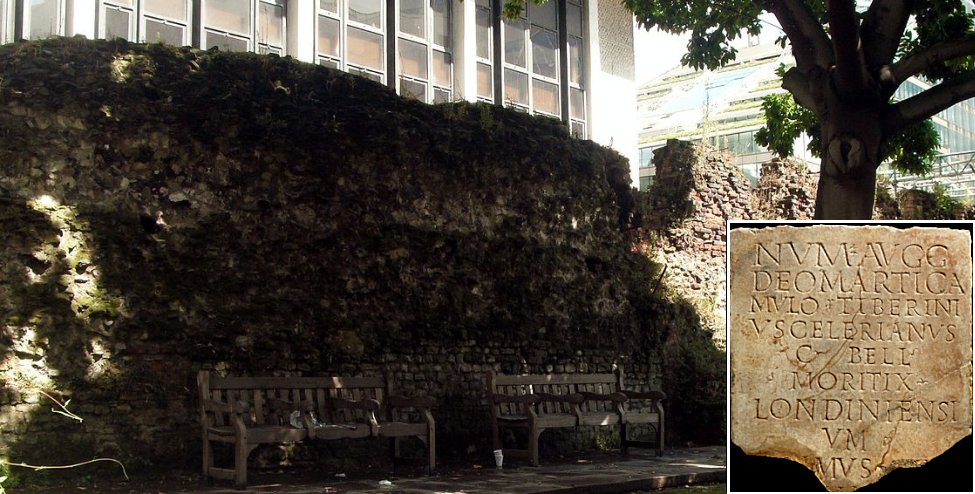 Left: The Roman wall at St Alphege Gardens; Credits: AdamBMorgan - CC0; Right:The first written record to use the word 'Londoners'. Image credit: Udimu - CC BY-SA 4.0
Left: The Roman wall at St Alphege Gardens; Credits: AdamBMorgan - CC0; Right:The first written record to use the word 'Londoners'. Image credit: Udimu - CC BY-SA 4.0
Around 350, a series of 22 solid, semi-circular towers were additionally constructed, and these functioned as bases for ballistae (an ancient form of crossbow used to propel a spear). During the Roman times, several similar town and city walls were constructed by the Romans in England and Wales, and their remains survived until now.
Londinium had been a Roman foundation, and for almost four centuries, it had its importance; later, the great city began to wither and trade, which was so crucial for the town, broke down. The Irish, Scottish, and Saxons from Germany all came to plunder the wealth of Roman Britain. The Roman legions began to withdraw from Britain in 383 AD to secure the Empire's borders in other places of Europe.
According to many researchers, Londinium had always been much more Roman than British, and in the 5th century, still many wealthy Roman families lived in Londinium.
Archaeological excavations revealed their remains in the form of largely hidden hoards of Roman coins and diverse household remains. In 410 AD, Emperor Honorius finally refused to send support to the British Romans. All Roman troops had been withdrawn, leaving the cities of Britain and the remaining Romano-British for themselves.
The Roman Empire's conquest of Britain finally ended, and a new time known as the Dark Ages began.
Written by – A. Sutherland AncientPages.com Staff Writer
Updated on July 22, 2022
Copyright © AncientPages.com All rights reserved. This material may not be published, broadcast, rewritten or redistributed in whole or part without the express written permission of AncientPages.com
Expand for referencesMore From Ancient Pages
-
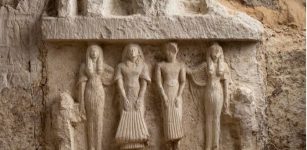 Impressive Ancient Underground Tombs And Chapels Unearthed In Saqqara, Egypt
Archaeology | Apr 16, 2023
Impressive Ancient Underground Tombs And Chapels Unearthed In Saqqara, Egypt
Archaeology | Apr 16, 2023 -
 Skadi: Goddess Of Destruction, Giantess And Patron Of Winter Hunters And Skiers In Norse Mythology
Featured Stories | Dec 14, 2017
Skadi: Goddess Of Destruction, Giantess And Patron Of Winter Hunters And Skiers In Norse Mythology
Featured Stories | Dec 14, 2017 -
 Discovery Of Chromosomes Offers Evidence Of Ancient Humans Living In South America Over 18,000 Years Ago
Archaeology | Aug 21, 2022
Discovery Of Chromosomes Offers Evidence Of Ancient Humans Living In South America Over 18,000 Years Ago
Archaeology | Aug 21, 2022 -
 Genghis Khan – Conqueror Of Nations, Ruler Of People
Featured Stories | Feb 12, 2019
Genghis Khan – Conqueror Of Nations, Ruler Of People
Featured Stories | Feb 12, 2019 -
 Codex Gigas – The Devil’s Bible – Ancient Secrets Of The World’s Largest Book
Artifacts | Jun 15, 2014
Codex Gigas – The Devil’s Bible – Ancient Secrets Of The World’s Largest Book
Artifacts | Jun 15, 2014 -
 Connection Between Viruses And Ancestors Of All Complex Life Has Been Found
Archaeology | Jul 1, 2022
Connection Between Viruses And Ancestors Of All Complex Life Has Been Found
Archaeology | Jul 1, 2022 -
 Puzzling Connection Between Native Americans And Lost Northern European Race Could Re-Write History
Civilizations | Apr 14, 2018
Puzzling Connection Between Native Americans And Lost Northern European Race Could Re-Write History
Civilizations | Apr 14, 2018 -
 Clovis People Invented ‘Fluting’ Ancient Stone Weaponry
Archaeology | Apr 5, 2017
Clovis People Invented ‘Fluting’ Ancient Stone Weaponry
Archaeology | Apr 5, 2017 -
 Ancient Mystery Of The Unidentified Strangely Dressed Man Found In Massachusetts And His Connection To Undeciphered Rock Carvings
Featured Stories | Sep 19, 2024
Ancient Mystery Of The Unidentified Strangely Dressed Man Found In Massachusetts And His Connection To Undeciphered Rock Carvings
Featured Stories | Sep 19, 2024 -
 Ancient DNA Has Rewritten Early Japanese History
Archaeology | Sep 17, 2021
Ancient DNA Has Rewritten Early Japanese History
Archaeology | Sep 17, 2021 -
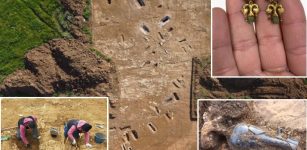 Incredible Roman Necropolis With Dressed Skeletons Buried In Ornate Tombs Discovered Close To The Ancient City Of Tarquinia
Archaeology | Jan 9, 2024
Incredible Roman Necropolis With Dressed Skeletons Buried In Ornate Tombs Discovered Close To The Ancient City Of Tarquinia
Archaeology | Jan 9, 2024 -
 Evidence Of Babylonian Destruction Of Jerusalem Found At The City of David
Archaeology | Aug 19, 2017
Evidence Of Babylonian Destruction Of Jerusalem Found At The City of David
Archaeology | Aug 19, 2017 -
 DNA Study Reveals How Europe’s Hunter-Gatherers Adapted To A New Way Of Life – Farming
Archaeology | Nov 24, 2015
DNA Study Reveals How Europe’s Hunter-Gatherers Adapted To A New Way Of Life – Farming
Archaeology | Nov 24, 2015 -
 Death And Afterlife In Sumerian Beliefs
Civilizations | May 12, 2017
Death And Afterlife In Sumerian Beliefs
Civilizations | May 12, 2017 -
 Ancient Manuscripts Of Mythical City Of Timbuktu
Artifacts | Jun 12, 2014
Ancient Manuscripts Of Mythical City Of Timbuktu
Artifacts | Jun 12, 2014 -
 Strange Ancient Sky Phenomenon – It Was Not A ‘Natural’ Space Object – Scientist Said
Featured Stories | Nov 5, 2019
Strange Ancient Sky Phenomenon – It Was Not A ‘Natural’ Space Object – Scientist Said
Featured Stories | Nov 5, 2019 -
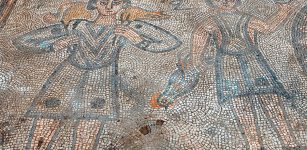 Mosaics Discovered In 1,600-Year-Old Church In Mardin Province,Turkey
Archaeology | Sep 22, 2020
Mosaics Discovered In 1,600-Year-Old Church In Mardin Province,Turkey
Archaeology | Sep 22, 2020 -
 Qanat Firaun -‘Canal Of The Pharaohs’ Is The Ancient World’s Longest Underground Tunnel
Featured Stories | Mar 10, 2022
Qanat Firaun -‘Canal Of The Pharaohs’ Is The Ancient World’s Longest Underground Tunnel
Featured Stories | Mar 10, 2022 -
 Why Didn’t Alexander The Great’s Body Show Signs Of Decomposition For Several Days? A Never-Before Suggested Explanation – From Scientists
Archaeology | Jan 24, 2019
Why Didn’t Alexander The Great’s Body Show Signs Of Decomposition For Several Days? A Never-Before Suggested Explanation – From Scientists
Archaeology | Jan 24, 2019 -
 The Great Pyramid And Ancient Egyptian Knowledge Shed Light On Biblical Mysteries – Surprising Information – Part 2
Biblical Mysteries | Nov 27, 2019
The Great Pyramid And Ancient Egyptian Knowledge Shed Light On Biblical Mysteries – Surprising Information – Part 2
Biblical Mysteries | Nov 27, 2019

